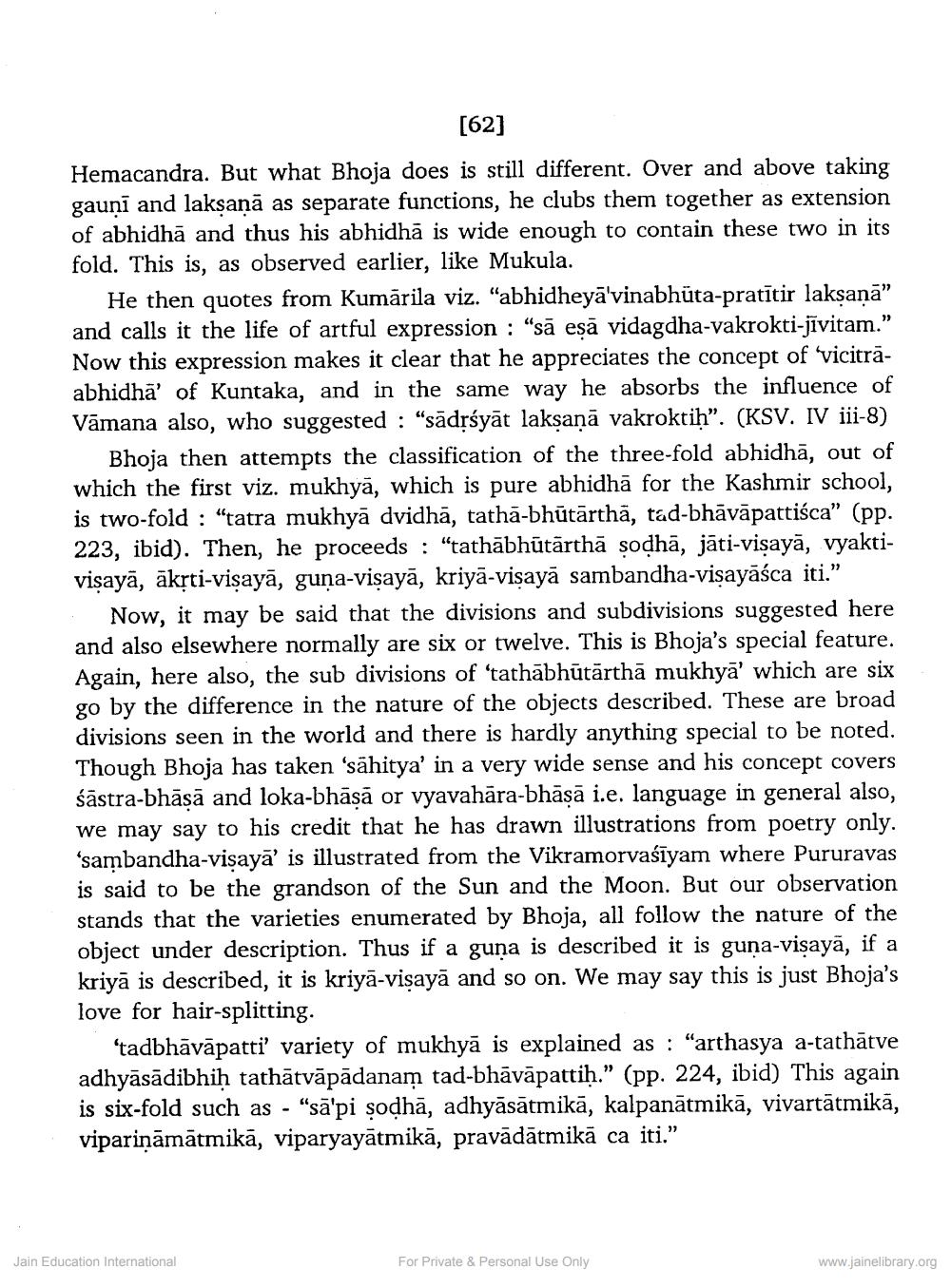________________
[62]
Hemacandra. But what Bhoja does is still different. Over and above taking gauni and laksanā as separate functions, he clubs them together as extension of abhidhā and thus his abhidh, is wide enough to contain these two in its fold. This is, as observed earlier, like Mukula.
He then quotes from Kumārila viz. "abhidheyā'vinabhūta-pratītir laksanā" and calls it the life of artful expression : “sā esā vidagdha-vakrokti-jīvitam." Now this expression makes it clear that he appreciates the concept of 'vicitrāabhidhā' of Kuntaka, and in the same way he absorbs the influence of Vāmana also, who suggested : "sādrśyāt laksaņā vakroktih". (KSV. IV iii-8)
Bhoja then attempts the classification of the three-fold abhidhā, out of which the first viz. mukhyā, which is pure abhidhā for the Kashmir school, is two-fold : "tatra mukhyā dvidhā, tathā-bhūtārthā, tad-bhāvāpattiśca” (pp. 223, ibid). Then, he proceeds : "tathābhūtārthā şodhā, jāti-visayā, vyaktivisayā, ākṣti-visayā, guna-visayā, kriyā-visayā sambandha-visayāśca iti.”
Now, it may be said that the divisions and subdivisions suggested here and also elsewhere normally are six or twelve. This is Bhoja's special feature. Again, here also, the sub divisions of 'tathābhūtārthā mukhyā' which are six go by the difference in the nature of the objects described. These are broad divisions seen in the world and there is hardly anything special to be noted. Though Bhoja has taken 'sähitya' in a very wide sense and his concept covers śāstra-bhāsā and loka-bhāsā or vyavahāra-bhāṣā i.e. language in general also, we may say to his credit that he has drawn illustrations from poetry only. 'sambandha-visaya' is illustrated from the Vikramorvašīyam where Pururavas is said to be the grandson of the Sun and the Moon. But our observation stands that the varieties enumerated by Bhoja, all follow the nature of the object under description. Thus if a guna is described it is guna-visayā, if a kriyā is described, it is kriyā-visayā and so on. We may say this is just Bhoja's love for hair-splitting.
'tadbhāvāpatti' variety of mukhyā is explained as : "arthasya a-tathātve adhyāsādibhiḥ tathātvāpādanam tad-bhāvāpatti).” (pp. 224, ibid) This again is six-fold such as - "sā'pi şodhā, adhyāsātmikā, kalpanātmikā, vivartātmikā, vipariņāmātmikā, viparyayātmikā, pravādātmikā ca iti."
Jain Education International
For Private & Personal Use Only
www.jainelibrary.org




